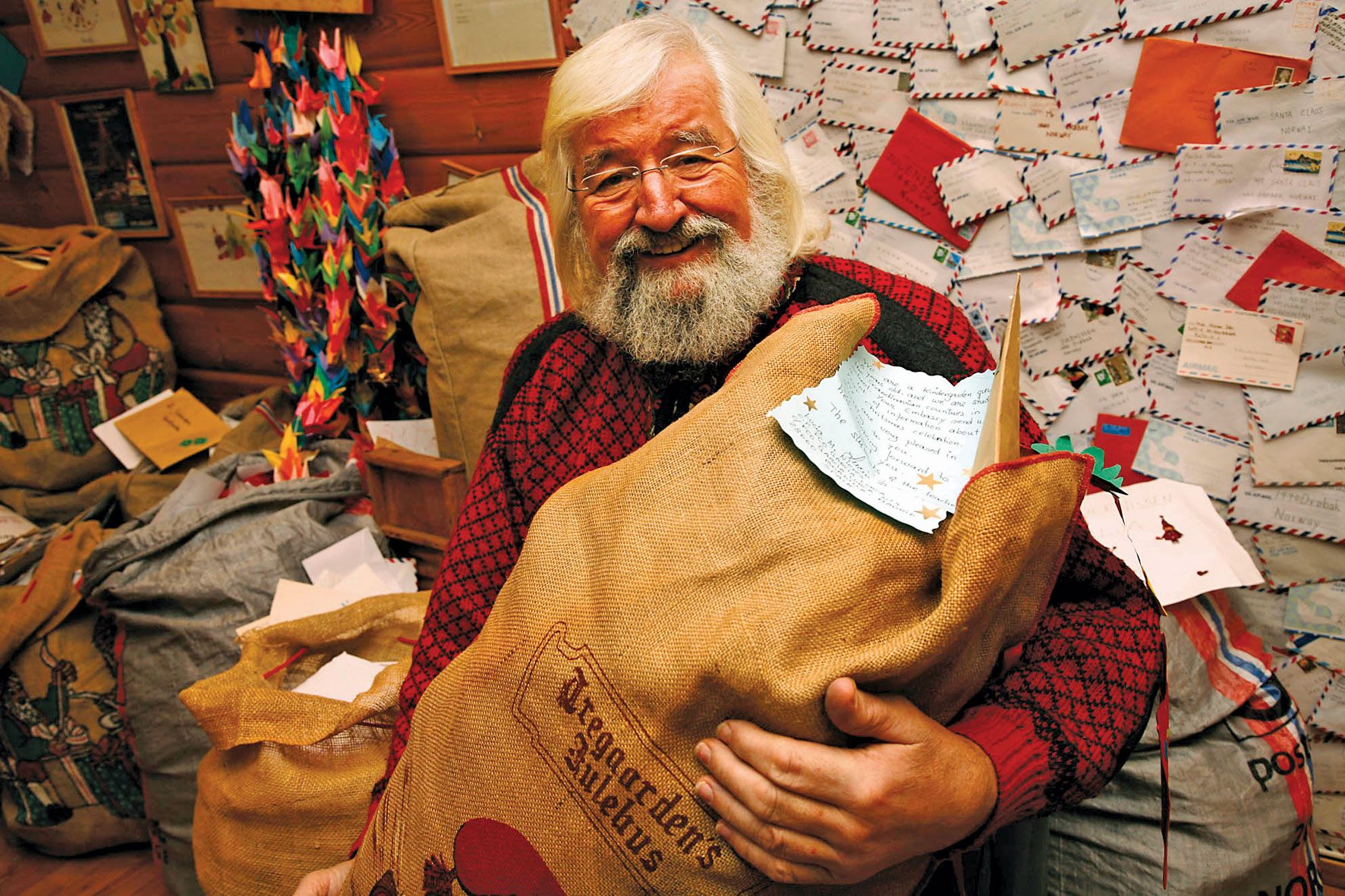

Let us introduce our little town with a big smile because Drøbak is also famous for its spectacular sunsets. Here you can relax beside the blue waters of the Oslo Fjord in an outdoor restaurant or in a boat in the harbor, and lift a glass towards the sun as it sets behind the forest clad hills in the west. Experience the white sails, the smell of the salt water and the gentle evening breeze. And maybe the chug of a fishing boat arriving with the day's catch of mackerel. Dream a little - as this is a typical Drøbak summer atmosphere.
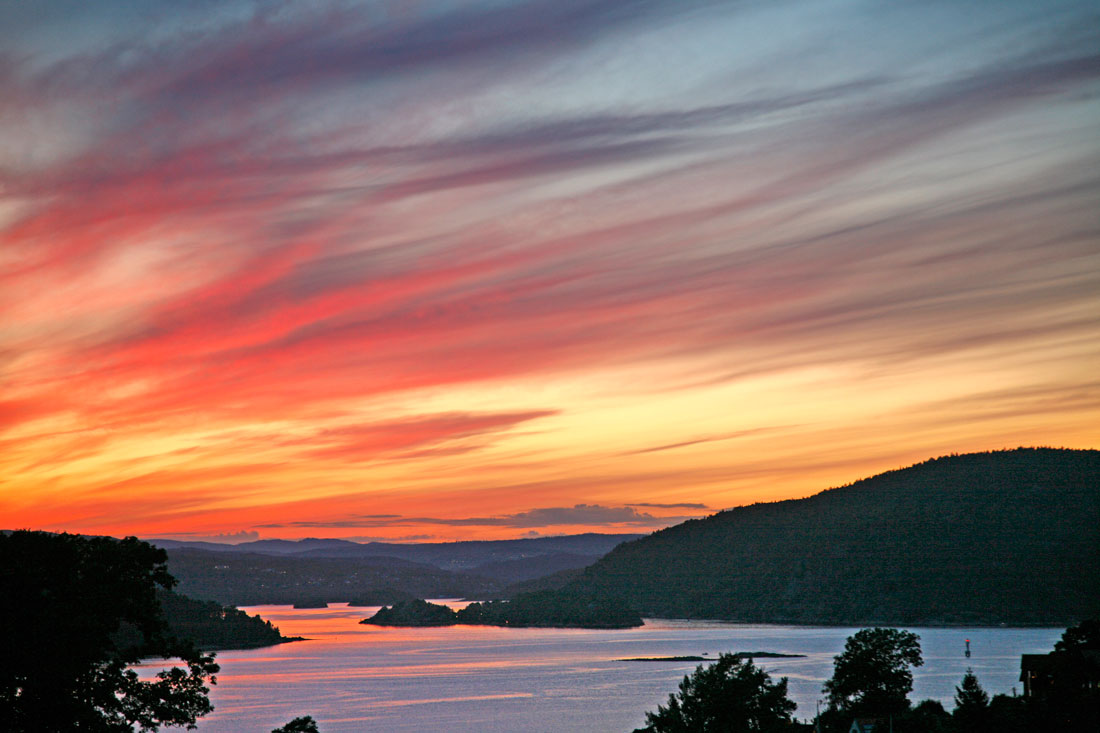
But, winter can also offer a special atmosphere with the frost smoke over the icy fjord waters, this time framed by the snow covered landscape. Illuminated passenger ferries and cargo ships slide by, so close you feel you can reach out and touch them. Beyond, the lighthouses and the floodlit Oscarsborg Fortress give a special atmosphere in the crisp winter darkness. This is the home of Santa Claus and his spirit hangs over the water, the forests and the little town. Let us dream of days gone by, fun and adventure!

Drøbak became large due to shipping around 1700-1800. Then the ships were loaded with large ice blocks and wood for export. On the way back they took food, handicrafts and industrial products with them. In 1814 Drøbak became a customs post and on 20 August 1820 Drøbak received its city rights, as the first of the densely populated cities in Akershus. Drøbak then had about 1000 inhabitants.

The name "Drøbak" comes from the location: From the fjord the style goes up to the interior, and probably Drøbak is an abbreviation of "steep slope" "dry baker". Year after year, the number of wooden houses that stood close to each other grew, and to this day we can rejoice in the original houses from the 18th century. The center has a protected cityscape and any renovations and / or renovations must comply with strict architectural rules to protect the special buildings. Fishermen, sailors, craftsmen and traders built with the financial opportunities they had then. The small wooden houses, which were then inhabited by the poor along the fishing beach, are very popular today. Drøbak is in many respects Norwegian history in a nutshell. The current prosperity must be seen in the face of past poverty and hard life. In 1962, the city municipality of Drøbak was merged with the neighboring agricultural municipality of Frogn. Today, Drøbak is the center of the municipality of Frogn with approx. 15000 inhabitants. In Drøbak you will find a large selection of restaurants, shops and public services and small businesses. Many are housed in the classic wooden houses we are so proud of.
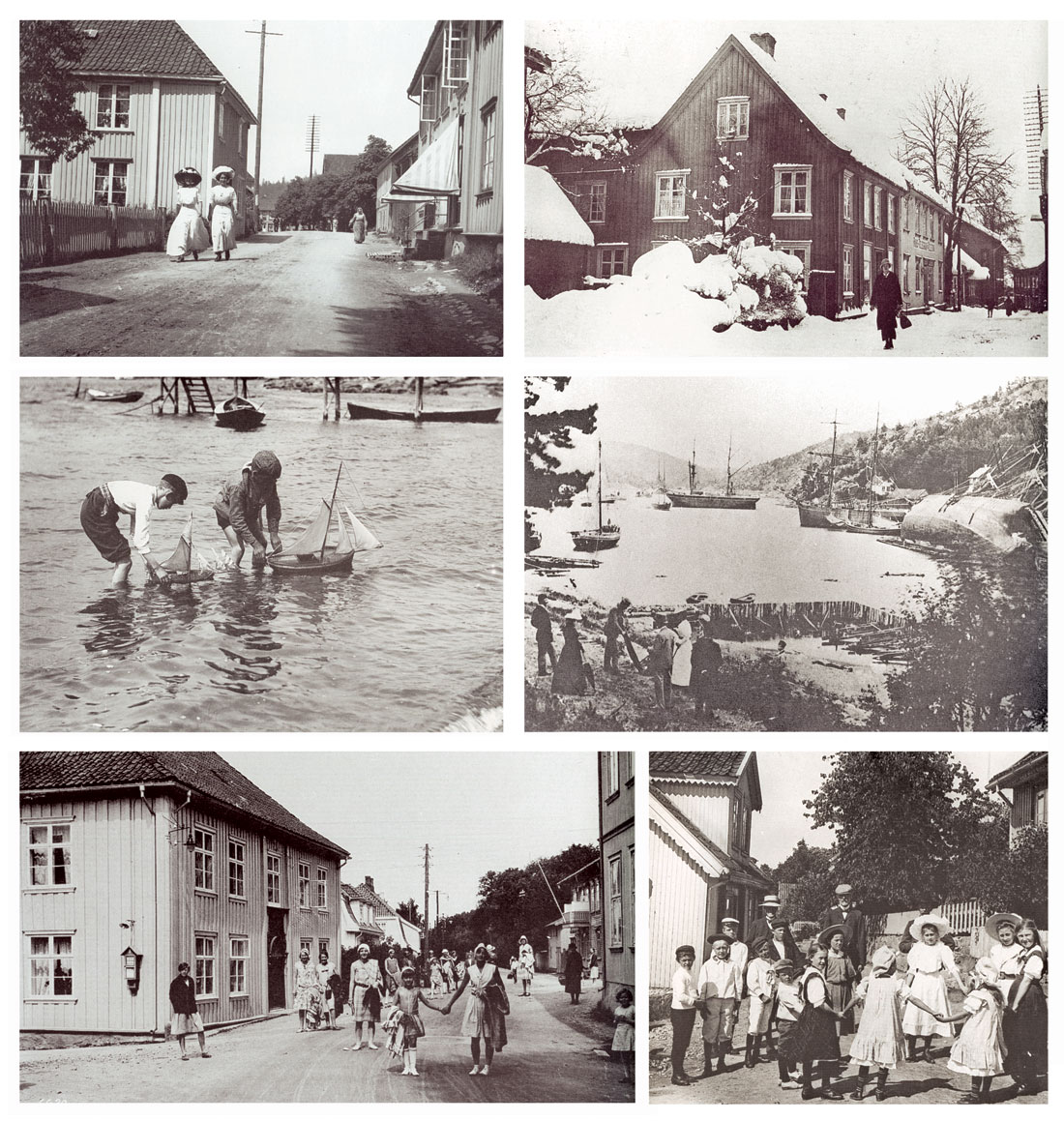
The "Vereniging Oud Drøbak" is a proponent of preserving and maintaining the old houses. On the homepage of the "Vereniging Oud Drøbak" you can make a historicism walk through Drøbak that shows the city of "past and present" You can choose from different languages: Norwegian, English, German and Italian.
The capital grew enormously around 1800 and many wanted to leave the city for a beach and summer holiday. Fully loaded steamships docked in Drøbak with wealthy people from the former Christiania (it has become Oslo since 1925). Hotels, pensions and shops flourished during the summer months. The location of Drøbak, on the fjord with its beaches and the many leisure opportunities was seen as a source of opportunities. Drøbak became a beach town with a bathhouse in the "Varmebad" which is in the Badepark, (next to the church in the plant garden, by the fjord). Today, Drøbak is also very popular with its beaches and diving towers and rocks on which you can lie. Everything is free and easily accessible. Many Norwegian painters and writers have used Drøbak as inspiration and place to stay: the Nobel Prize winner Knut Hamsun and the poet Herman Wildenvey, the painters Kristian Krohg, the brothers Bergslien, Hans Fredrik Gude and Edvard Diriks (a cousin of Edvard Munch).

The history of Drøbak is irrevocably connected to the Oscarsborg Fortress. Where the Oslofjord is at its narrowest, a fortress was built as early as 1643-45. At the end of 1800 it was further expanded and improved and when Norway became independent from Sweden in 1905, Oscarsborg was probably the best military stronghold. Most of the fortress was built by Swedish masons, a funny fact as far back as thought. In 1940, the most important event in the history of Oscarsborg took place. Germany invaded Norway on April 9 without a declaration of war. A poorly trained garrison sank the ship "Blucher" with cannon shots and torpedoes. The enemy thus got a cookie of his own dough, the cannons "Aron" and "Joshua" were of German manufacture. They were fired on the orders of Colonel Birger Eriksen, who was rewarded after the war for his decisive action.
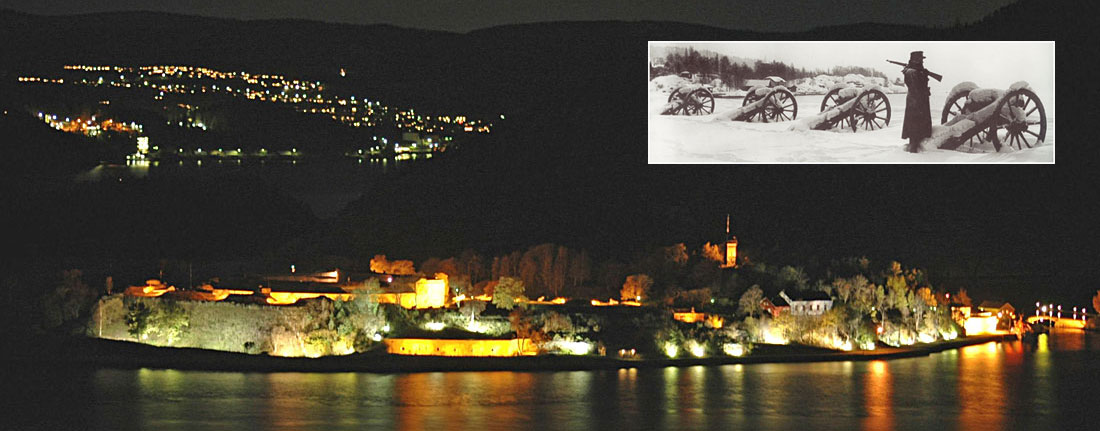
The Germans had all the key people and much important equipment on board the ship. When the ship with its 900 men was sunk, this led to a delay in the invasion. The royal family, government, First and Second Chambers and the Norwegian Bank could be evacuated. This later led to strong opposition from England. The Blücher is still at the bottom of the fjord as a war grave, at "Askholmene" northeast of Oscarsborg. It has long been a ticking environmental bomb because of the oil. In 1994–95, the ship was pumped empty. The anchors of the ship have been preserved, one is in the "bathing park" next to the statue of Colonel Birger Eriksen.

Oscarsborg has no military significance today, but it still has a commander and a coat of arms. The fortress has a large defense museum and exciting tours, also especially for children. The island also has a hotel with Spa, dining and a guest harbor for boat lovers. Great for picnicking there too. The courtyard of the fortress is used in the summer for large cultural events, including professional opera performances. From Drøbak, a ferry regularly sails to Oscarsborg. (ask at the tourist office).
The aquarium in Drøbak was established with the help of the members of the «Drøbak boat association». Here you will find many species of fish, crustaceans and marine animals that you can find near Drøbak. The aim is to copy a truthful environment of life in the fjord. The aquarium is the most visited attraction in all of Akershus. Many schools organize school trips here. Both children and adults can lift their spirits here. There is also a pool where children can touch some sea animals. Today, the aquarium collaborates with the marine biologists of the University of Oslo.
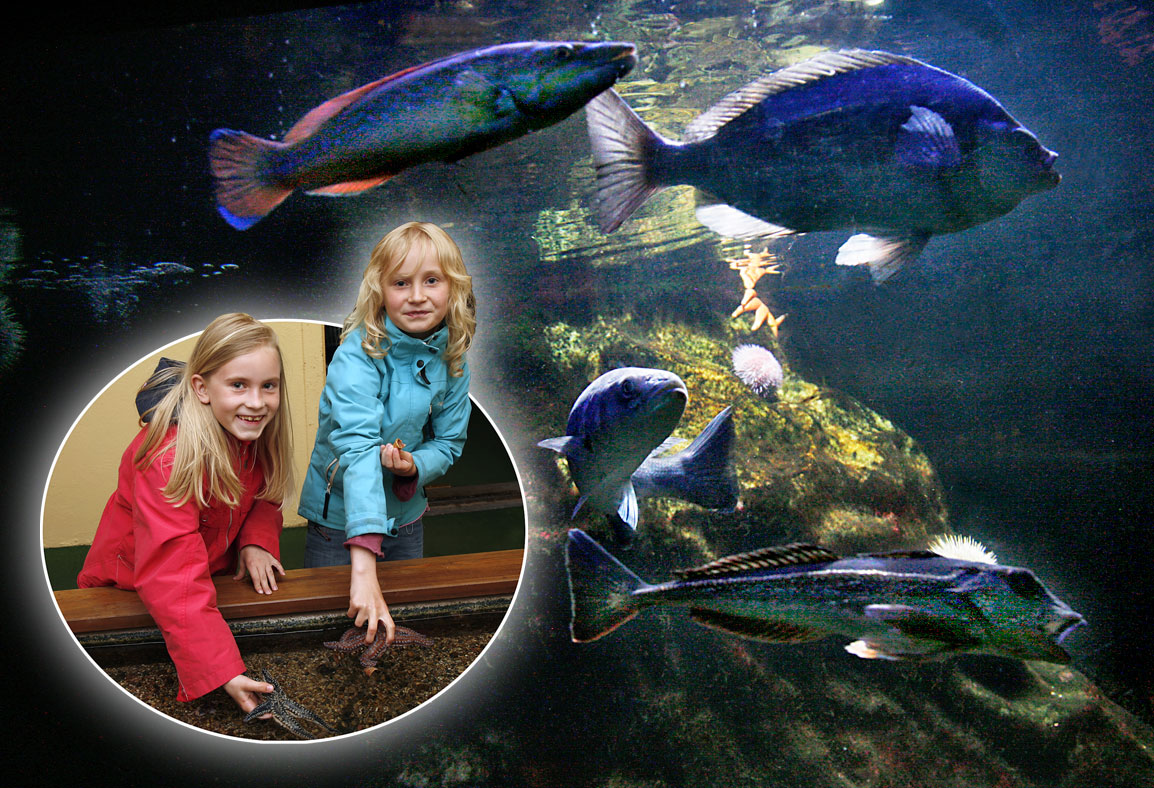
They have their research station here in Drøbak.
There is a lot of catering with beautiful terraces and there are nice shops in Drøbak. Most are within walking distance of the center. You can choose from a pizza or kebab, a real Norwegian gourmet meal, or other foreign cuisines. A delicious beer or a glass of wine also offers possibilities. (note the price!)
• Overnight in Drøbak? If you want to spend the night in Drøbak, please contact the atmospheric Hotel Reenskaug. You can also spend the night in the adventurous surroundings of Oscarsborg Hotel & Spa.
• The gallery: Drøbak is known for its many galleries of art and applied art. You'll also find Santa's house where it's Christmas all year round! "Avistegners Hus" has a collection of cartoonists. There is a lot to laugh about here.
• The "Lutefiskmuseum" is located opposite the Tourist Office and Aquarium. Here you will find the only "Lutefisk museum" in Norway. Information, photos and an exhibition full of humor of the most special traditional meal of the sea with its accompanying drink: aquavit (Norwegian potato brandy). Lutefisk is prepared hake in a very special way.
• Motorboat museum: The "Drøbak boat association" has created a collection of boat engines and other rare artifacts in the museum in Kroketønna.
• Church in Drøbak: If you need a quiet, peaceful moment, you can visit the stylish old wooden church built in 1776. The church is open in the summer on a number of weekday days. There are also free summer concerts on Saturdays. The church is located at the beginning of the large park "Badeparken". In the church itself, you will find more information in different languages.
• Blues in the harbor, concerts and revue: Port blues is organized in July. Several catering events organize concerts with well-known artists and bands. A revue is also played in Drøbak! (usually in Norwegian) These events can be found in the activity calendar and on the website.
• Drøbak's cinema: This has become a major audience attraction after the great sound and film quality improvements. You can watch 3D, so cheers for the exciting dark hours.
• Shopping & Service: clothing, children's articles, pharmacy, delicacies, butcher, baker, vegetable farmer, flower and garden center, liquor store, shoe store, shoemaker, optician, hairdresser, photographer, craft and hobby shop, list maker, dollhouse, kiosk, garage, library - bank and post office you too in the center.
• Village square: In the middle of the city, on the main square near Santa's house and library, there are numerous market stalls, vnl. antiques and collectibles. Beat your blow.
• Drøbak City: 1,5 km from the city center you will find a larger shopping center with grocery stores and other shops and a post office.
• Golf: Near Drøbak City you will find the golf course. The Drøbak golf club offers "golf fun on a good course". The park course has 18 holes and an attractive 200-year-old clubhouse with restaurant.

The small fishing port in the center, is a great place for the connoisseur who wants to relax a bit. Here you can buy fresh shrimp, directly from the boat. The only place with this possibility in the entire inner fjord of Oslo. In the harbor there is always something to do and see, especially in the summer months. From the piers or along the coast you can try your fishing luck. The "Drøbaksunde" (bay) is one of the best fishing spots in the Oslofjord. Fishing in the sea is free in Norway, do not forget your fishing rod or clothespin with a rope for the crabs.
The tourist office is close to the fishing port and the Aquarium. Here you can get a map and answers to most questions. Whether you come from Norway, Europe or elsewhere in the world, we are sure you will have a great time in Drøbak. You can get there easily - Drøbak is only 40 minutes from the center of Oslo. In summer there is a boat from Akerbrygge in Oslo to Drøbak.
